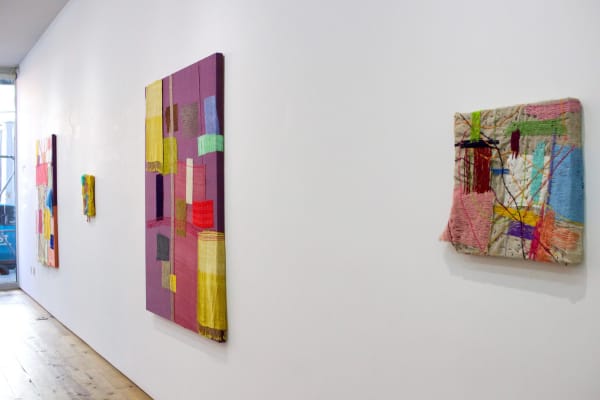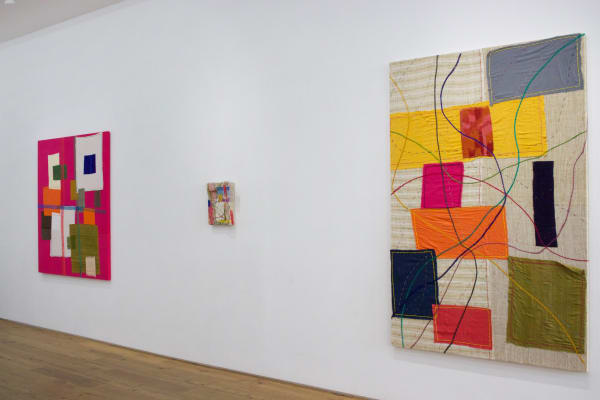Natasha Das
MARC STRAUS is pleased to present new works by Natasha Das (b.1984, Assam, India) in her first solo exhibition with the gallery.
Born and raised in Assam, India and trained in classical representational oil painting in Italy, Das turned her attention to fiber-based materials in 2017. Her exploration of various textiles produced in India, their traditional roles, and social connotations signals a symbolic return to her roots.
Khadi, Ghisa, and Tula (cotton in Assamese) are new materials that Das introduces in this new series, and they are rather subversive compared to the revered silks (mostly Eri and Muga silk) that she predominantly used in the past. Ghisa is a fabric woven from the byproduct of Muga silk and generally considered a lesser material, yet it is a widely used fabric in the region. Khadi, a coarser version of cotton, originates from Mahatma Gandhi’s time, when Indian farmers were encouraged to weave their own cotton to circumvent the monopoly of the East Indian Company in the 1910s. Khadi fabric became the symbol of the silent economic revolution within the context of the freedom struggles of the Indian subcontinent from British colonialism. Tula on the other hand, is a regenerative cotton produced by Indian farmers in recent years relying entirely on rainwater and natural resources forecasting a more hopeful future.
In addition to the new fabrics, in her purely and slowly handmade works, Das uses natural dyes for the first time combining them with colors produced with synthetic pigments. These new materials and hues bring additional meanings to subtle visual shifts in her work. By choosing materials that are handmade and have strong ties to history and communities, Das references much needed values of supporting community, of being in harmony with nature, and of valuing time.
Bright, saturated colors rule the palette in this series and are balanced by softer, earthy notes. Das employs a multitude of artistic tools such as stitching, layering, painting with color thread, and even sculpting by extending the dimensions of the works in some cases.
“During my time spent in Assam this summer, I have been meticulously layering pure organic materials while collaborating with skilled weavers. I engage in conversations with individuals who partake in the mundane act of weaving, an activity that may hold no inherent intent or purpose for some while serving as a means to an end for others. (…) The very act of using our hands, engaging in critical thoughts, and intertwining personal memories and emotions, weaves together an intricate tapestry that resonates with the human experience.”
In Locale 1 – Purple, vibrant threadwork runs across layers of Tula cotton and Eri Silk mapping, connecting, intersecting, and crossing lines. The base color, a deep purple, is contrasted with lively yellows, a saturated crimson, and a pastel blue and green. The fabrics and thread lines create abstract maps that represent spaces we construct, spaces we leave our imprints upon, and mark our presence.
Natasha Das studied painting in Florence, Italy, and New York. Her work has been exhibited at the Hudson Valley Museum of Contemporary Art, the Hunterdon Art Museum and Gross McLeaf Gallery in Philadelphia. Her work is included in numerous private collections in the US, Europe, and Asia, as well as in public collections such as Wharton School of the University of Pennsylvania and the Kiran Nadar Museum of Art in Delhi, India.






